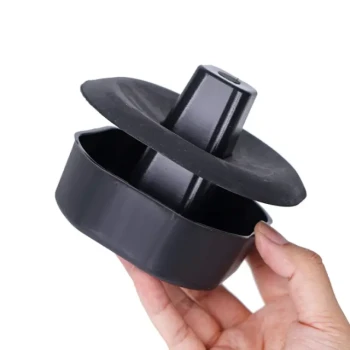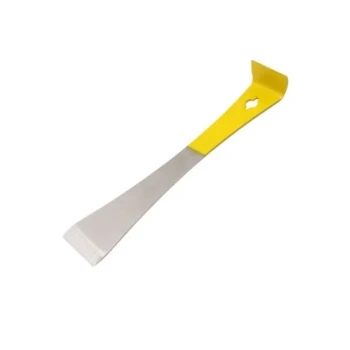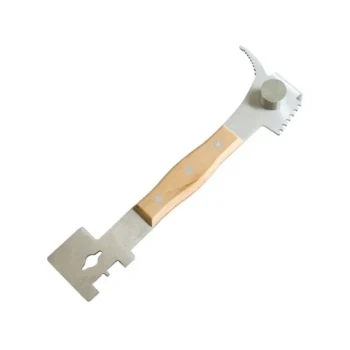Properly leveling your beehive stand is a foundational step in beekeeping that directly impacts the safety, health, and productivity of your colony. The most immediate reason is to create a stable base that will not tip over, especially on soft ground or during hive inspections. An unstable hive is a significant safety hazard for both the beekeeper and the bees.
While preventing the hive from tipping over is the obvious goal, the true importance of leveling lies in its profound impact on hive structure and bee behavior. A level foundation dictates how bees build their comb, which affects everything from routine inspections to the colony's ability to manage moisture.
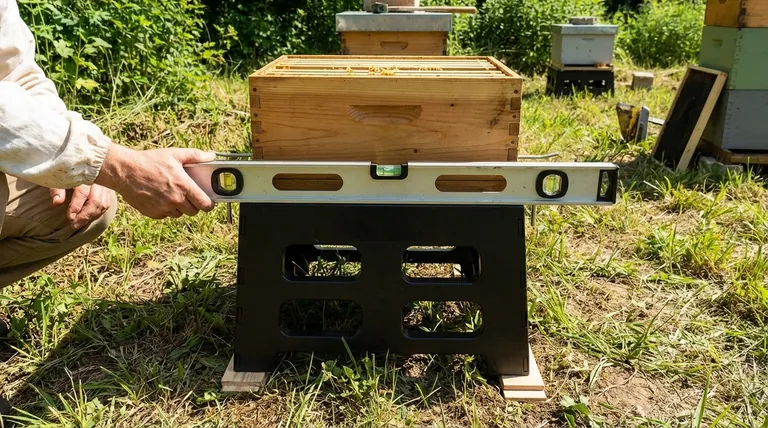
The Core Principle: Physical Stability
An unlevel stand is a preventable risk. A productive beehive is incredibly heavy, and placing it on an unstable base invites disaster.
The Threat of an Unstable Base
A stand that isn't level has a compromised center of gravity. This makes it far more susceptible to tipping from being bumped, pushed by animals, or subjected to strong winds.
The weight of a mature hive, which can easily exceed 100-200 pounds (45-90 kg), magnifies this instability.
The Problem with Shifting Ground
Soil is not static. It softens when wet, heaves during freeze-thaw cycles, and can be disturbed by burrowing animals.
A perfectly leveled stand distributes the hive's immense weight evenly across its points of contact with the ground. This minimizes sinking and shifting over time, ensuring long-term stability.
Beyond Stability: The Impact on Hive Biology
Bees are master engineers who rely on gravity. Disrupting their reference point has significant consequences for the internal structure of the hive.
How Bees Build Comb
Bees use gravity as their primary guide to build perfectly parallel, vertical sheets of wax comb. This precise architecture is essential for the colony's function.
An unlevel hive forces the bees to build their comb at an angle relative to the frames.
The Danger of Cross Comb
When the hive is not level, bees may build "cross comb" or "burr comb," attaching the comb to adjacent frames or the hive walls instead of keeping it neatly within a single frame.
This makes hive inspections nearly impossible. Trying to pull a frame that is attached to its neighbors will tear the delicate wax, destroying brood, spilling honey, and potentially injuring the queen.
Promoting Proper Water Drainage
While a hive should be perfectly level from side-to-side, many experienced beekeepers introduce a very slight forward tilt (front-to-back).
This small incline, just enough to be barely perceptible, helps rainwater run off the landing board and out of the hive entrance, rather than pooling on the bottom board and creating a damp, unhealthy environment.
Understanding the Trade-offs: Level vs. Tilted
Your decision to be perfectly level or to introduce a slight forward tilt depends on your priority.
The Case for Perfectly Level
For beginners, simplicity is key. A stand that is perfectly level in all directions is the safest and most straightforward goal. It ensures stability and predictable comb construction, removing a major variable.
The Case for a Slight Forward Tilt
This is an optimization for hive health. By ensuring the hive is perfectly level side-to-side but tilted slightly forward, you gain the benefit of excellent water drainage. The tilt must be subtle enough that it does not negatively impact comb building.
What to Absolutely Avoid
A side-to-side tilt is the worst-case scenario. It offers no drainage benefits and significantly increases the chances of bees building problematic cross comb, making hive management a difficult and destructive process.
Making the Right Choice for Your Goal
Leveling isn't just about preventing a hive from falling; it's about setting the stage for a healthy, manageable colony.
- If your primary focus is simplicity and safety: Level the stand perfectly in all directions to ensure maximum stability.
- If your primary focus is optimizing hive health: Ensure the stand is perfectly level from side-to-side, but introduce a very slight forward tilt for moisture management.
- If your primary focus is easy hive inspections: Prioritize a level foundation (especially side-to-side) to encourage straight comb that can be removed cleanly.
A few minutes spent with a level before placing your hive is one of the best investments you can make for its long-term success.
Summary Table:
| Goal | Recommended Leveling Strategy | Key Benefit |
|---|---|---|
| Simplicity & Safety | Perfectly level in all directions | Maximum stability, prevents tipping |
| Optimized Hive Health | Level side-to-side, slight forward tilt | Promotes water drainage, prevents dampness |
| Easy Hive Inspections | Level side-to-side (critical) | Encourages straight comb, prevents cross-comb |
Ensure your apiary's foundation is solid with HONESTBEE.
As a trusted supplier for commercial apiaries and beekeeping equipment distributors, we provide the durable, reliable equipment your operation depends on. A stable hive starts with the right stand and proper setup.
Let us help you build a stronger, more productive apiary. Contact our wholesale experts today to discuss your equipment needs and ensure every hive is set up for success.
Visual Guide
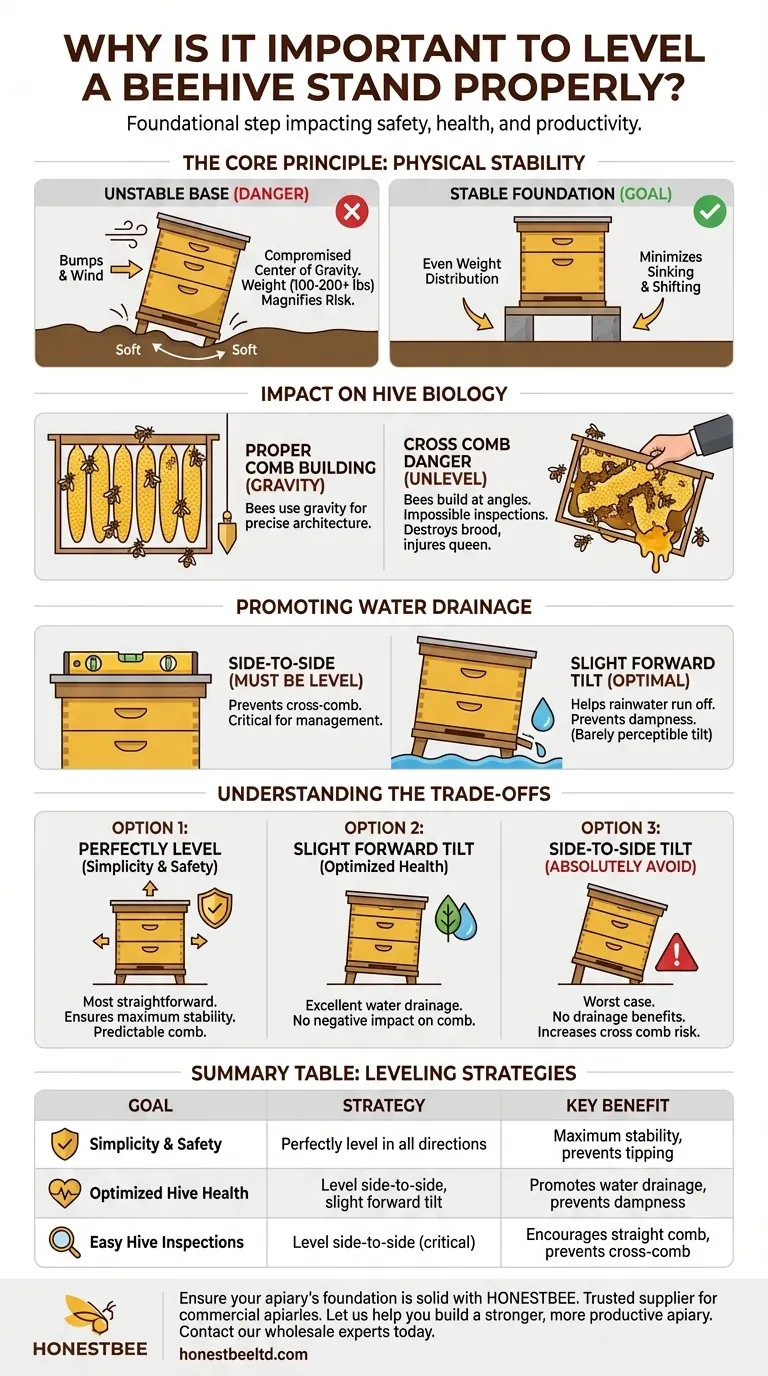
Related Products
- Plastic Bee Hive Stand for Beekeeping
- Metal Hive Feet Bee Hive Stand for Ant Protection
- Metal Bee Hive Stand Bee Box Stand for Beekeeping
- Wholesales Dadant Size Wooden Bee Hives for Beekeeping
- Professional Drop-Style Hive Handles for Beekeeping
People Also Ask
- How do bees regulate the temperature of their hive during the summer? Discover Their Natural Cooling System
- How do bees regulate ventilation and temperature in the hive? Master Hive Climate Control
- How do plastic bee hives compare to wooden hives in handling? Reduce Strain & Boost Efficiency
- Why is it important to level a hive stand properly? Prevent Catastrophic Failure & Ensure Hive Health
- Why is elevating the hive important? A Simple Step for a Healthier, More Productive Colony





